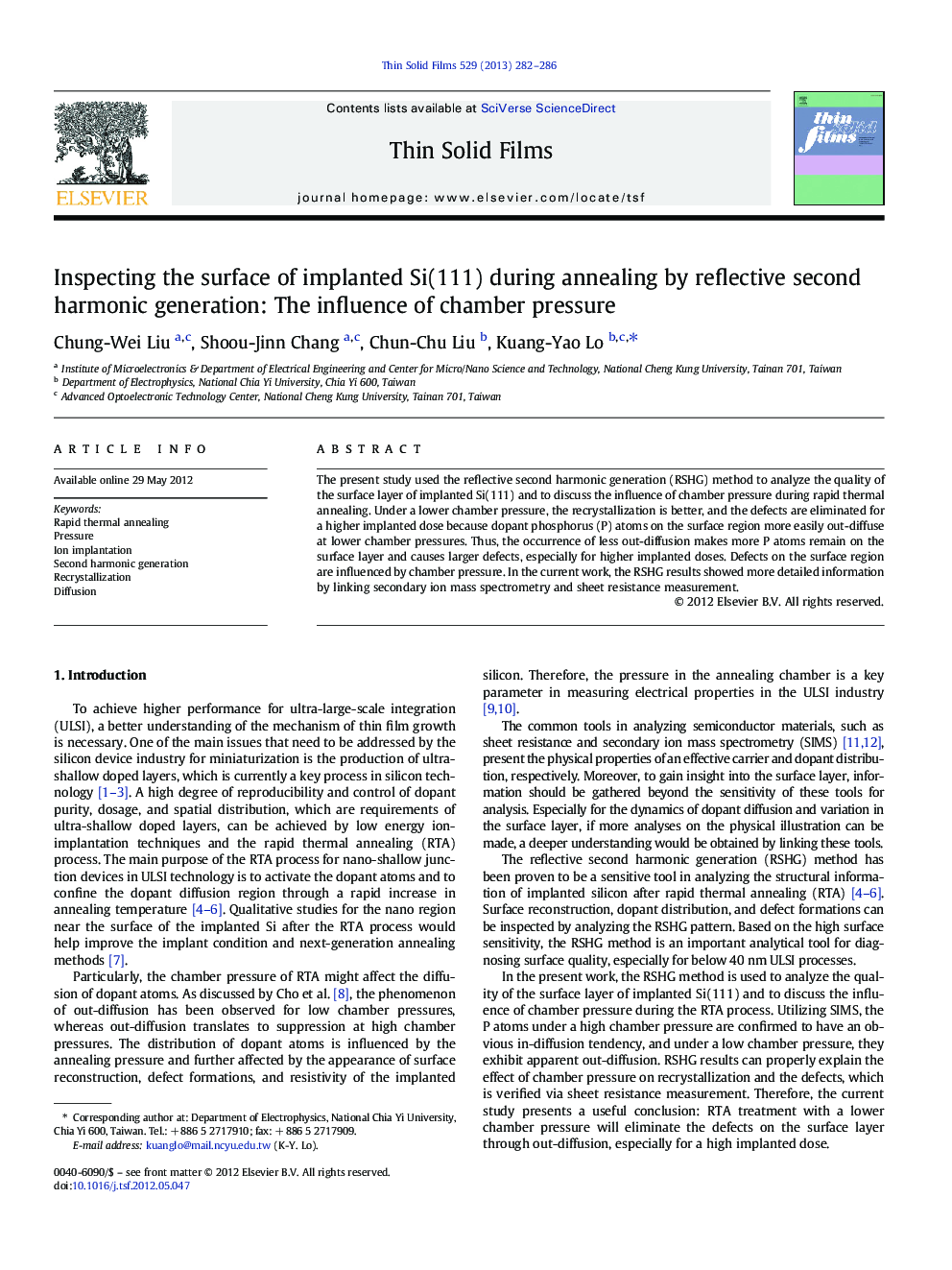| Article ID | Journal | Published Year | Pages | File Type |
|---|---|---|---|---|
| 1666822 | Thin Solid Films | 2013 | 5 Pages |
The present study used the reflective second harmonic generation (RSHG) method to analyze the quality of the surface layer of implanted Si(111) and to discuss the influence of chamber pressure during rapid thermal annealing. Under a lower chamber pressure, the recrystallization is better, and the defects are eliminated for a higher implanted dose because dopant phosphorus (P) atoms on the surface region more easily out-diffuse at lower chamber pressures. Thus, the occurrence of less out-diffusion makes more P atoms remain on the surface layer and causes larger defects, especially for higher implanted doses. Defects on the surface region are influenced by chamber pressure. In the current work, the RSHG results showed more detailed information by linking secondary ion mass spectrometry and sheet resistance measurement.
► Rapid thermal annealing (RTA) with different chamber pressures was performed. ► The quality of implanted Si was analyzed by reflective second harmonic generation. ► High-dose implanted Si is obviously influenced by the pressure in the RTA chamber. ► Pressure in the RTA chamber affects the generation of defects. ► Defect suppression is obvious at relatively low chamber pressure.
